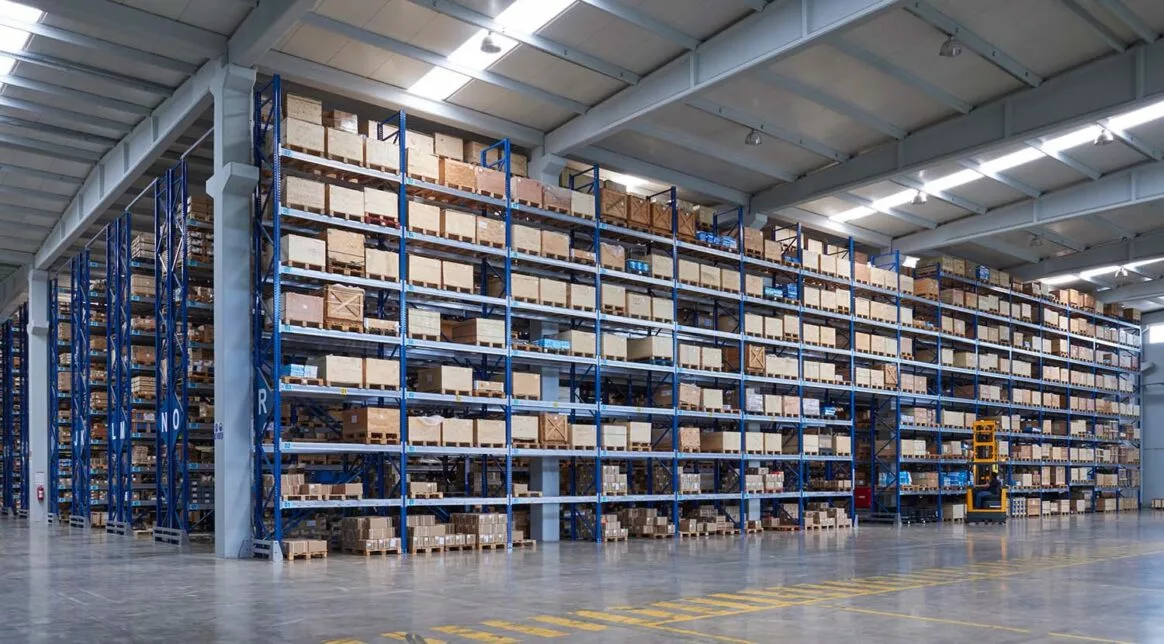How online retailers can combat rising business rates through packaging optimisation

Do you work for an online retailer that owns its own warehousing site or uses a third-party logistics (3PL) provider?
If you do, you may be aware of the incoming rise to business rates for large distribution warehouses. Announced in the 2022 Autumn statement, the review of business rates could see some online retailers (and their 3PL partners) feel the pain of a 27% increase in their bills from April 2023.
Understandably, the warehousing sector has criticised the move, with the rates rise being described as “painful” and ”unfair”.
So, what’s the driving force behind the and how can your packaging optimisation help you combat the increase in costs?
- 1.
- 2.
- 3.
- 4.

The background of rising business rates for large distribution warehouses
Why are the UK Government set to increase business rates for large distribution warehouses? Well, there are a number of factors and it’s largely being driven by the bricks vs. clicks imbalance…
Bricks vs. clicks imbalance
Online retail has been the great digital disrupter across many industries. The prime example that comes to mind is the Netflix effect on Blockbuster. Once valued at over $4bn and with over 10,000 bricks and mortar retail, Blockbuster was the video entertainment brand leader for decades, but failure to innovate and the bricks and mortar business model meant that Netflix rapidly overtook them.
With online retailers usually having lower overheads versus traditional high street retailers, there has long been a tussle between clicks and bricks. Traditional retail models are often seen by some as unsustainable.
And stats back this up – by the end of 2019 almost ¼ of all retail sales had moved online. In the UK, pandemic lockdowns exacerbated this trend, with online sales reaching a peak of 36% of all retail in January 2021. At the same time, bricks and mortar retail has been in sharp decline. Britain’s high street vacancies are at an all-time high of 13.7% and the British Retail Consortium reported a 77% decline in footfall to stores.
Shelving the Online Sales Tax
To address the bricks vs. clicks imbalance, the UK Government had floated the idea of the Online Sales Tax (OTS) at the start of 2022. At the time, it was estimated that a 1% OTS on businesses with a £2m turnover or higher could raise £2bn.
However, the consultation raised issues around complexity, non-resident evasion and how the tax would be applied to non-pureplay models like click and collet and omni-channel retailers. Therefore, for now the Government has decided to shelve the proposed Online Sales Tax.
Introducing increased business rates for large distribution warehouses
The solution to the complexity of the OTS and the clicks vs. bricks imbalance? A rise in business rates for large distribution warehouses and a £13.6bn freeze on bricks and mortar business rates.

Pressure for online retailers to keep costs down
On top of rising business rates, online retailers are seeing operational costs rise. Constraints on supply chains and the availability of raw materials are all pushing costs up and margins down. On top of this, labour shortages and the premium expense of warehouse space are only adding to the pressure online retailers face when trying to operate cost-effectively.
With the cost-of-living crisis also having the potential to negatively influence internet retails sales in coming months too, now more than ever retailers need to look at how to make savings…
So, where does packaging factor into all of this?

How packaging optimisation can help combat increasing business rates
Inefficient packaging and processes can have a big impact on the costs throughout your supply chain. If a business uses packaging that doesn’t provide protection, their product gets damaged and returns rise. Likewise, packaging materials that are too big or clunky it could take up too much space.
And when we’re thinking about the rise in business rates, the volume of warehousing space you’re using is important. This is because business rates are calculated based on a property’s “rateable value”. The larger the square footage of your warehouse, the more likely it is to attract higher business rates. Not ideal with the 27% increase on the horizon!
That’s where packaging optimisation comes in…
Tackling storage space through lighter, more efficient packaging
Using packaging materials that are lighter and more space efficient can help you reduce your costs associated with storage and warehousing.
Shaving just a few millimeters off the size of a cardboard box could enable you re-think how they’re palletised and stored. The same goes for an alternative design that’s more space efficient.
Similarly, are you using any bulky-to-store in fill like polystyrene or packing chips? Swapping to compact, on-demand inflatable air pillows or tightly wound rolls of paper void fill could all help you cut back on the storage space you need.
Taking advantage of stock holding so you can use smaller premises
How many pallet spaces does your packaging take up in your warehouse? If you’re purchasing packaging direct from a manufacturer, you may need to buy high volumes of packaging to achieve a certain price point. The flipside of that may be that you need to take delivery of a high volume of packaging and store it all in your own warehouse.
If you work with a distributor (like us), you could take advantage of stock holding and just-in-time supply. This is when your packaging is stored at your supplier’s warehouse and drip fed into your site in line with demand.
Services like this can help you release space and could even allow you to use smaller premises, rather than allocate valuable pallet spaces to a relatively low value commodity – a win if you want to mitigate the impact of rising business rates.
Assessing storage and packing area layouts to maximise existing space
If you’ve been through a period of growth, you might be considering moving to a larger warehouse. But with the business rates hike on the horizon you might find yourself put off by this. So, how do you make the most of the space you have?
If you’ve already made your packaging lighter and smaller, and use a stock holding service, it might be time to assess your warehouse layout.
Often, warehouse layouts evolve over time. This could mean that the space isn’t being used as efficiently as possible.
Investing in compact or revised packing benches could help you make the most of the space you have and help you organise where packing materials are stored more effectively.
Another option is flexing space for spikes in demand with corrugated or correx pick bins. These modular storage spaces are light enough to be moved around and can be broken down.

Support with packaging optimisation
At Macfarlane Packaging we can help you with all areas of packaging optimisation, including combatting storage and space issues that could help you save on the size of the warehouse you need.
We can even show you how changes to your packaging can impact key areas across your supply chain and the financial and environmental savings you could be making with our Packaging Optimiser tool.
Why not get in touch to see how we can help you protect your business from business rate rises?
